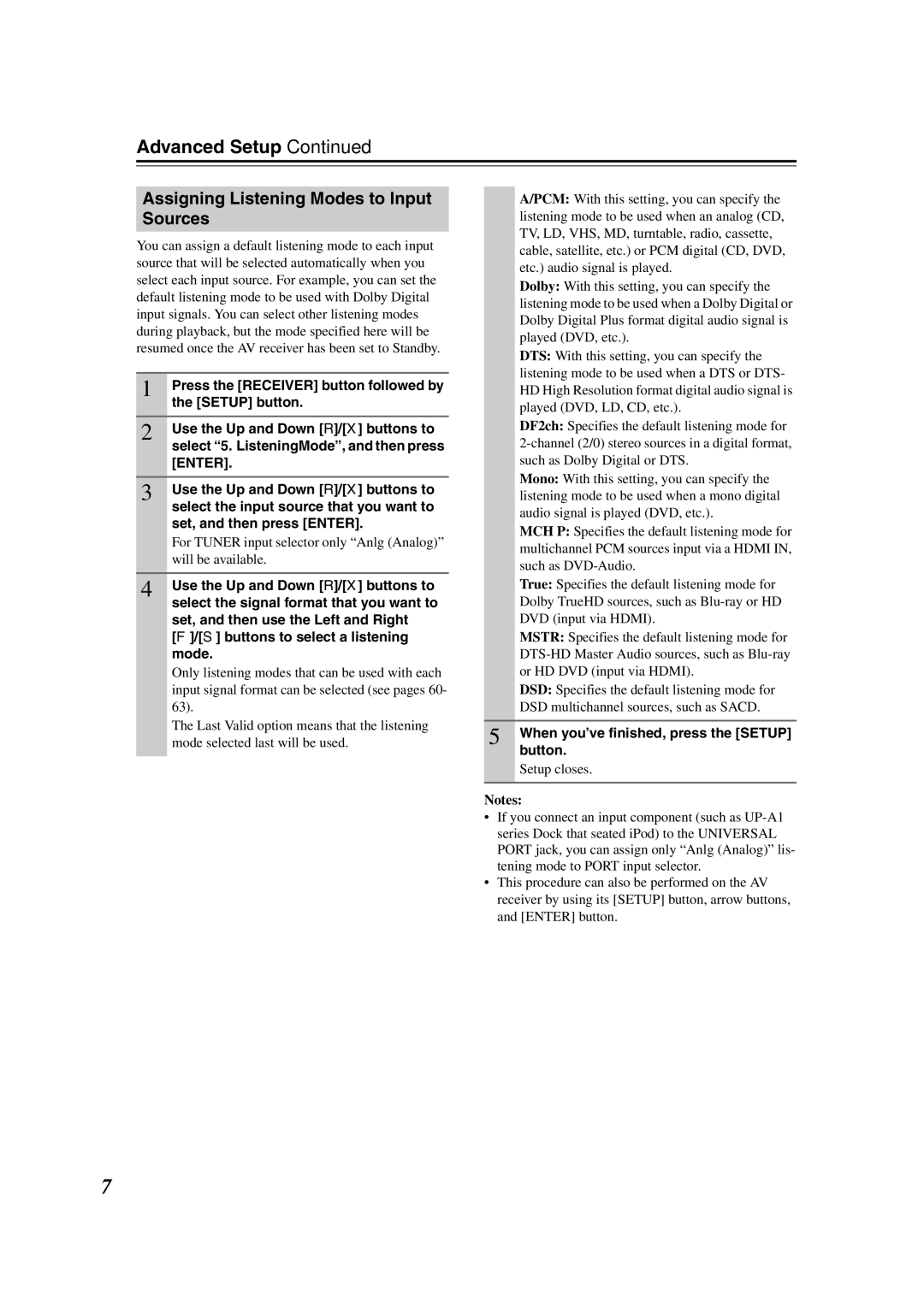SR507, TX-SR577 specifications
The Onkyo TX-SR577 and TX-SR507 are well-regarded A/V receivers that exemplify high-performance audio and video processing. Both models blend advanced technology with user-friendly operation, making them perfect for home theater enthusiasts.The Onkyo TX-SR577 is particularly known for its 7.1 channel surround sound capability, which allows users to immerse themselves in rich audio environments. It supports various audio formats, including Dolby TrueHD and DTS-HD Master Audio, delivering high-resolution sound that is essential for a fully immersive experience. The unit is equipped with an impressive 100 watts per channel, providing ample power for spacious rooms and ensuring that audio remains crisp, even at higher volumes.
Another standout feature of the TX-SR577 is its inclusion of Onkyo's proprietary WRAT (Wide Range Amplifier Technology), which reduces distortion and enhances clarity. This technology, combined with high-current amplification, allows for exceptional dynamics and control over speakers, making it suitable for both music and movies.
On the video side, the TX-SR577 supports 1080p video pass-through, ensuring that HD content is transmitted with full fidelity. It also offers multiple HDMI inputs, making it easy to connect various high-definition devices, such as Blu-ray players, gaming consoles, and streaming devices.
The TX-SR507, while slightly lower in specifications, still delivers impressive audio performance with its 5.1 channel configuration. It is designed for users seeking a more straightforward setup without sacrificing sound quality. This receiver boasts a compact design, making it a good choice for smaller spaces.
Both models feature Onkyo's easy-to-use GUI, allowing for seamless navigation and control adjustments. They come equipped with various connectivity options, including HDMI, component, and composite video inputs. The inclusion of an AM/FM tuner also lets users enjoy their favorite radio stations without additional equipment.
In terms of user-friendly features, both models are compatible with Onkyo's unique AccuEQ technology for room calibration. This system analyzes the acoustics of your space and adjusts the audio output to ensure balanced sound throughout the room.
Overall, the Onkyo TX-SR577 and TX-SR507 stand out for their robust build quality, versatile input options, and superior sound performance, catering to a range of listening preferences and home theater setups. Whether it's for casual TV watching or hosting movie nights, these A/V receivers make a fantastic addition to any entertainment system.

